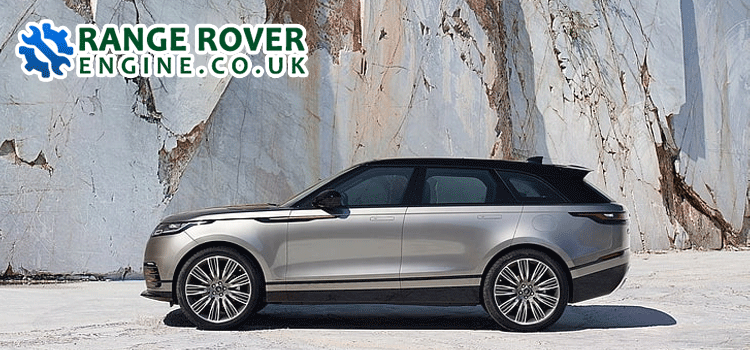What Are The Latest Technological Advancements In The Range Rover 2.0 Engine?

The Range Rover 2.0 engine has long been celebrated for its performance, reliability, and innovation. As automotive technology advances, the 2.0 engine continues to evolve, incorporating cutting-edge features that enhance efficiency, power, and sustainability. We delves into the latest technological advancements in the Range Rover 2.0 engine, exploring innovations in fuel efficiency, hybrid integration, performance enhancement, emissions reduction, materials and design, connectivity, and driver assistance systems. Understanding these advancements can provide insights into the future of automotive engineering and the enduring appeal of the Range Rover.
Enhanced Fuel Efficiency
One of the significant advancements in the Range Rover 2.0 engines is the focus on fuel efficiency. The integration of advanced fuel injection systems and optimized combustion processes has significantly improved fuel economy. The use of direct injection technology ensures precise fuel delivery, maximizing energy extraction from every drop of fuel. Additionally, variable valve timing and lift systems adjust the engine’s breathing according to driving conditions, reducing fuel consumption without compromising performance. These innovations collectively contribute to a more efficient engine, lowering the cost of ownership and reducing environmental impact.
Hybrid and Electric Integration
The push towards electrification has not left the Range Rover 2.0 engine behind. Recent models feature hybrid technology that combines a traditional internal combustion engine with an electric motor. This hybrid integration provides seamless power delivery, improved fuel efficiency, and reduced emissions. The electric motor assists during acceleration and can power the vehicle in low-speed, urban driving conditions, where combustion engines are less efficient. Regenerative braking captures energy that would otherwise be lost, recharging the battery and further enhancing efficiency. This hybrid approach ensures that the Range Rover 2.0 engine remains relevant in an increasingly eco-conscious market.
Performance Enhancement
Despite the focus on efficiency, the Range Rover 2.0 engine has not sacrificed performance. Technological advancements have led to increased power output and smoother operation. Turbocharging technology has been refined to deliver more immediate and sustained power across a broader range of engine speeds. This results in better acceleration and overall performance. The integration of lightweight materials in the engine’s construction reduces weight, contributing to improved handling and agility. These performance enhancements ensure that the Range Rover 2.0 engine delivers a dynamic and responsive driving experience.
Emissions Reduction
Reducing emissions is a critical goal for modern engines, and the Range Rover engine has made significant strides in this area. Advanced catalytic converters and particulate filters effectively capture and neutralize harmful emissions. The adoption of selective catalytic reduction (SCR) technology further reduces nitrogen oxide (NOx) emissions by injecting a urea-based solution into the exhaust stream. Additionally, the implementation of start-stop technology automatically shuts off the engine during idle periods, reducing fuel consumption and emissions. These measures collectively contribute to a cleaner, more environmentally friendly engine.
Advanced Materials and Design
The use of advanced materials and innovative design techniques has revolutionized the Range Rover 2.0 engine. High-strength aluminum alloys and composites reduce engine weight while maintaining structural integrity. This lightweight construction improves fuel efficiency and enhances vehicle dynamics. Furthermore, advanced manufacturing processes, such as precision casting and machining, ensure tighter tolerances and better performance. The design of the engine components has been optimized to minimize friction and wear, extending the engine’s lifespan and reliability. These advancements in materials and design reflect a commitment to quality and innovation.
Connectivity and Smart Features
Modern engines are becoming increasingly connected, and the Range Rover 2.0 engine is no exception. Integration with vehicle infotainment and telematics systems allows for real-time monitoring of engine performance and diagnostics. Smart features, such as predictive maintenance alerts, notify drivers of potential issues before they become critical. Connectivity also enables over-the-air (OTA) updates, ensuring that the engine’s software remains up-to-date with the latest improvements and enhancements. These smart features enhance the overall ownership experience, providing peace of mind and convenience.
Driver Assistance Systems
Technological advancements in the Range Rover 2.0 engine extend to driver assistance systems that enhance safety and convenience. Adaptive cruise control, for instance, uses sensors to maintain a safe distance from the vehicle ahead, adjusting speed as necessary. Engine management systems are integrated with advanced driver assistance systems (ADAS) to provide features such as lane-keeping assistance and collision avoidance. These systems rely on precise engine control to deliver smooth and responsive performance, ensuring a safer and more comfortable driving experience.
Sustainability and Future Trends
The commitment to sustainability is evident in the latest Range Rover 2.0 engine advancements. The incorporation of recycled materials in engine construction reduces the environmental footprint. Moreover, research into alternative fuels, such as hydrogen and biofuels, is ongoing, with potential future applications. The trend towards further electrification and even full-electric versions of the Range Rover indicates a clear direction towards sustainable mobility. These future trends underscore the brand’s dedication to innovation and environmental responsibility, ensuring that the Range Rover 2.0 engine remains at the forefront of automotive technology.
Conclusion
The Range Rover 2.0 engine exemplifies the fusion of tradition and innovation, continually evolving to meet the demands of modern drivers. The latest technological advancements in fuel efficiency, hybrid integration, performance enhancement, emissions reduction, materials and design, connectivity, driver assistance systems, and sustainability highlight the engine’s versatility and forward-thinking design. As the automotive industry moves towards a more sustainable and connected future, the RangeRover 2.0 engine stands as a testament to engineering excellence, promising an exciting and efficient driving experience for years to come.


